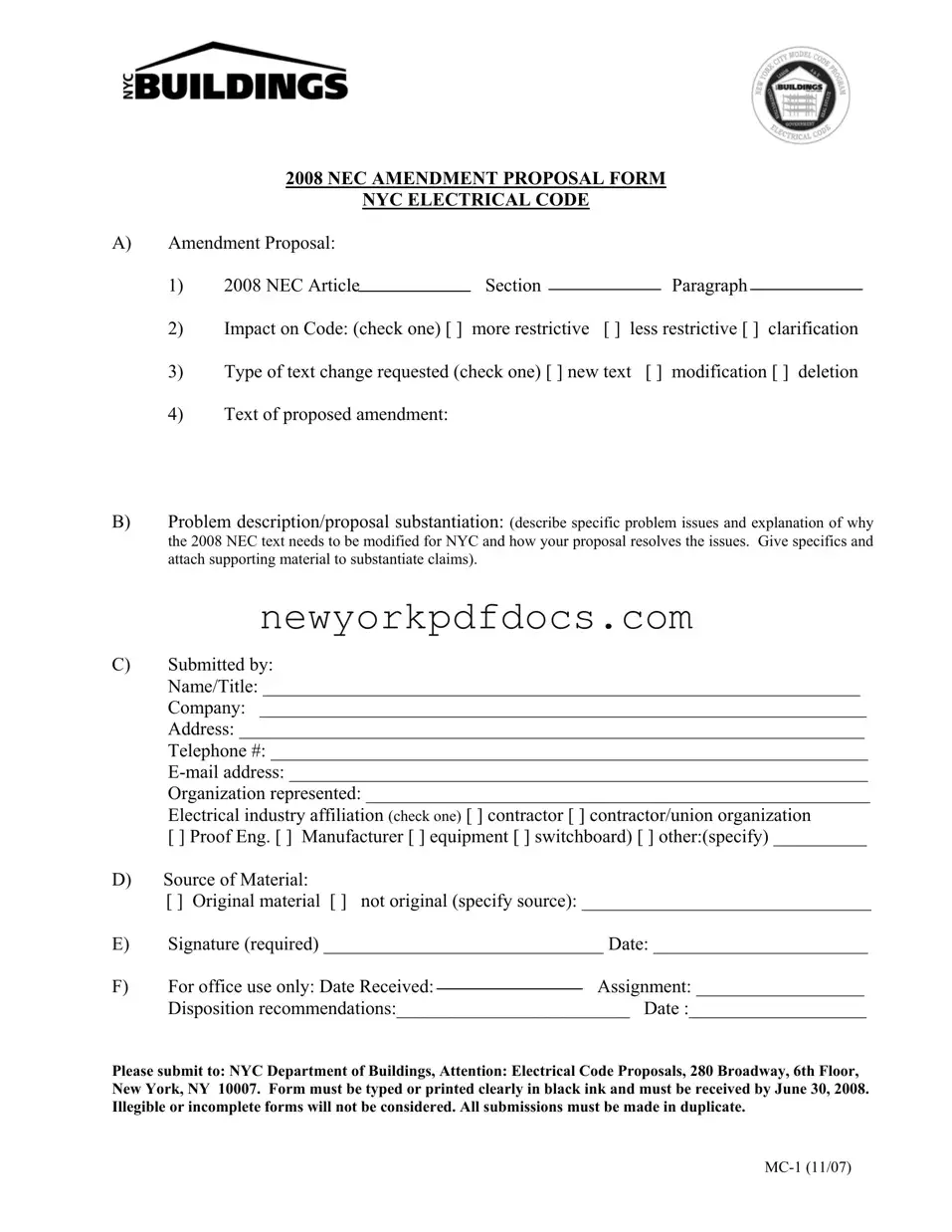Filling out the NYC Buildings MC 1 form can be a straightforward process, but many individuals make common mistakes that can lead to delays or even rejection of their proposals. Understanding these pitfalls is crucial for anyone looking to submit an amendment proposal effectively.
One frequent mistake is failing to clearly identify the specific section and paragraph of the 2008 NEC that is being amended. This information is essential for the reviewers to understand the context of the proposal. Without this clarity, the proposal may be deemed incomplete.
Another common error is neglecting to check the appropriate box under the "Impact on Code" section. Whether the change is intended to be more restrictive, less restrictive, or a clarification, this choice significantly affects how the proposal is interpreted. Incomplete selections can lead to confusion and delay in processing.
Additionally, some submitters fail to provide a comprehensive description in the "Problem description/proposal substantiation" section. This area requires a detailed explanation of the issues at hand and how the proposed changes will resolve them. Vague descriptions do not provide the necessary context and can result in proposals being set aside.
Many people also overlook the importance of including their contact information accurately. Missing or incorrect details such as name, address, or telephone number can hinder communication. If questions arise about the proposal, the reviewers need to reach the submitter without unnecessary complications.
It is also essential to remember that the form must be submitted in duplicate. Failing to provide two copies can lead to immediate rejection of the submission. This requirement is often overlooked, especially by first-time submitters.
Another mistake is not signing the form. The signature is a critical component, indicating that the submitter acknowledges the information provided is accurate. Omitting this signature can render the proposal invalid.
Some individuals forget to specify their organization represented and their electrical industry affiliation. This information helps reviewers understand the background of the submitter and the perspective they bring to the proposed changes. Missing this detail can lead to a lack of credibility for the proposal.
Another common oversight is failing to attach any supporting materials that substantiate the claims made in the proposal. Providing evidence or documentation strengthens the case for the amendment and can significantly influence its acceptance.
Lastly, submitters often do not adhere to the formatting requirements, such as typing or printing clearly in black ink. Illegible forms are not considered, which can lead to wasted effort. Ensuring clarity in presentation is just as important as the content itself.
By avoiding these ten common mistakes, individuals can improve their chances of successfully submitting an amendment proposal through the NYC Buildings MC 1 form. Attention to detail and thoroughness are key in navigating this process efficiently.

